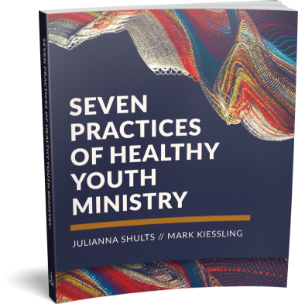My favorite book for and about young people, Penrod, begins with our eleven-year-old protagonist, Penrod Schofield, hunkered down in his secret writing den, working on his own creative fiction titled HARoLD RAMoREZ THE RoADAGENT OR WiLD LiFE AMoNG THE ROCKY MTS. Penrod lights a self-fashioned hayseed cigarette and continues the adventure with CHAPITER THE SIXTH:
Mr. Wilson reched for his gun but our hero had him covrd and soon said Well I guess you don’t come any of that on me my freind. Well what makes you so sure about it sneered the other biting his lip so savagely that the blood ran. You are nothing but a common Roadagent anyway and I do not propose to be bafled by such, Romorez laughed at this and kep Mr. Wilson covred by his ottomatick.
A struggle ensues between Penrod’s two characters, and the drama escalates:
Soon our hero manged to get his back to the wall for he was fighting for his very life now and shot Mr Wilson through the abdomen Oh said Mr Wilson you _____ _____ _____ (The dashes are Penrod’s.) Mr Wilson stagerd back vile oaths soilin his lips for he was in pain Why you _____ _____ you sneered he I will get you yet _____ _____ you Harold Ramorez
After a few more paragraphs, some ax and teeth wounds, and several more blankety-blanks, Penrod’s mother calls him to lunch, and the excitement ends mid-sentence.
Meanwhile, back in our world, youth workers continue debating the effect of culture on young people. We dispute whether we should promote cultural isolation, inoculation, or engagement; how the problems lie not with culture but with our failure to address culture with our kids; whether we really have to keep up with every new fad; which elements of culture are acceptable and which aren’t; and how kids are changing and being changed by culture.
Which is why I began with Penrod. American humorist Booth Tarkington wrote this book in 1914. The young author in Tarkington’s story is mimicking the trashy pulp novels as popular then as today, whether in print or on film. Penrod would be at home with Quentin Tarentino.
This is not to say that conditions for kids haven’t changed in the last hundred years. Certainly access to objectionable and downright harmful material is easier with the Internet. The content too often is woefully graphic. And the rate of change in pop culture has accelerated, a factor that has not been much researched or discussed. But we may sometimes overstate the concern. I’ve been teaching adolescent psychology to undergraduates for fifteen years. Every semester each class of nineteen-to-twenty-one-year-olds tells me, without my prompting, how much tougher life and culture are for high school kids today than when they were in high school. I’m not exaggerating.
The dialogue about culture is worthwhile. There are important concerns to discuss. Kids can be harmed and often are. But there’s no need for more (or less) hand wringing about kids today than in other decades with the deadly flu epidemics of the 1910s, the free sex of the jazz age, the homeless and transient youth of the Depression, the millions killed in WW II, the polio terror of the mid-century, the despair and anger during the nuclear cold war, and any number of other threats to kids’ spiritual, emotional, and physical well-being.
What’s more, our situation may not be all that different from (or as bad as) the first century Mediterranean basin with crucified bodies hanging at town’s edge, gory amphitheater games open for free in most cities, bizarre and popular mystery religions with midnight baptisms in bull’s blood, and institutionalized sacred prostitution. All this was available for a short walk in real, not virtual, life.
Paul, then, has good reason to caution young Timothy, “But as for you, man of God, shun all this. Aim at righteousness, godliness, faith, love, steadfastness, gentleness. Fight the good fight of the faith” (I Tim 6:11-12, RSV). Part of the good fight for which we train our young people includes guarding against the assaults their culture launches, influencing that culture where needed and practical, and assessing culture through the eyes of faith.
A Biblical text often used as a barometer of culture is I John 4:1-3:
Dear friends, do not believe every spirit, but test the spirits to see whether they are from God, because many false prophets have gone out into the world. This is how you can recognize the Spirit of God: Every spirit that acknowledges that Jesus Christ has come in the flesh is from God, but every spirit that does not acknowledge Jesus is not from God. This is the spirit of the antichrist, which you have heard is coming and even now is already in the world. (NIV)
I’ve used this text to challenge kids’ cultural preferences and selections in music, movies, and TV. The kids are often defensive at first, seeking to justify their likes and dislikes. We can offset this defensiveness by sharing examples from their parents’ and our own youth and current life that fall far short of glorifying God. Then the kids get into the discussion and are able to examine their own consumption of pop culture.
Exegetically, the I John text has more to do with the false teaching of Gnosticism in the early church than with William Blake, Frank Sinatra, Bob Dylan, New Kids on the Block, Britney Spears, or whichever iteration of popular verse happens to be current. Be careful not to ram the text into doing what John did not write it to do. Using it to inflict blunt force trauma on our own pop culture targets and peeves is not what the Apostle had in mind. Still, the text addresses a cultural wave against the Gospel for John’s readers, and now it helps orient our conversation to Jesus Christ incarnate and how the world responds to this news.
In a recent article for Youthworker (May/June 2005), Steve Rabey adapts some themes from Francis Schaeffer’s book, Art and the Bible, and offers three criteria for evaluating films:
1. Is it well-written? Does the dialogue sound like something real people would say, or does it sound like a Hollywood writer cranked it out on a bad afternoon?
2. Is it well-acted, and are the characters fully-dimensioned? Or are they cardboard “good guys” and “bad guys” who do little more than embody their predetermined roles?
3. Does the film say something insightful and true about the human condition? Or does it merely re-package tired clichés and try to hide these behind top-drawer actors and lavish sets?
Rabey does not prescribe these directly for kids’ use–and they are a bit high-end–but kids’ reach should exceed their grasp. Lots of kids can make headway applying these criteria to movies, TV, advertisements, books, video games, and other artifacts of their culture.
These criteria are not explicitly religious or spiritual, but that may be for the better. While culture–pop or otherwise–is always the vestment for some set of philosophical and spiritual beliefs, its features indicate these only indirectly. Rabey’s questions about dialogue, characterization, and clichés about the human condition can help tease out the underlying beliefs at work in both the artifact and the kids.
In addition to Rabey’s three general criteria, we can add some that more directly connect our discipleship to artifacts of culture in the arts, and also in clothing styles, language, and other forms of expression (these questions will need to be re-worded and simplified for kids):
4. In what ways might this artifact (and perhaps our participation in it) compromise or enhance a life that conveys the goodness of God’s creation and all that God has done for us, yet respects God’s justice?
5. In what ways might this artifact (and perhaps our participation in it) compromise or enhance a life that conveys the structure and order, including the moral order, in God’s creation, yet does not reduce life to rigid legalism or flaccid antinomianism?
Paul had to deal with the major cultural issue of circumcision in the lives of two colleagues. In the case of Timothy, Paul endorsed going ahead with this spiritual-cultural sign for the sake of the Gospel (Acts 16:3). In the case of Titus, Paul adamantly refused others’ insistence that Titus be circumcised, again for the sake of the Gospel (Gal 2:3). His apparent inconsistency, however, is resolved by his larger principle of becoming all things to all people that by all means some may be saved (I Cor 9:19-23).
Moving young people to understand this intersection of faith and culture is long, hard work. Much of it can be done by helping them confront their own tastes and preferences, which are changing as quickly as the pop culture around them. William Willimon says, “Christianity without formation is no match for the forces at work in our society.” Whether its Penrod’s “ottomatick,” Obi Wan’s light saber, that Bratz doll, or internet porn, we’ve got lots of raw material to help kids compare and contrast their culture and the kingdom of God.
Dr. Russ Moulds serves as assistant professor of psychology at Concordia University-Nebraska.
Resources
For some thoughtful essays on this subject, see Christ and Culture in Dialogue, Angus Menuge, gen ed., Concordia Publishing House, 1999. The first essay, Niebuhr’s Christ and Culture Reexamined, provides helpful background for every teacher of the church











0 Comments